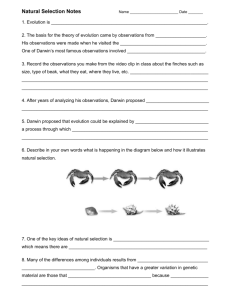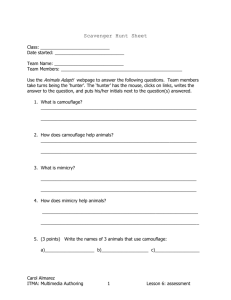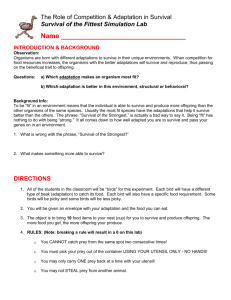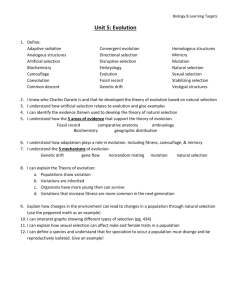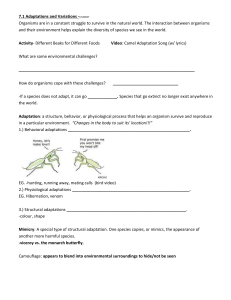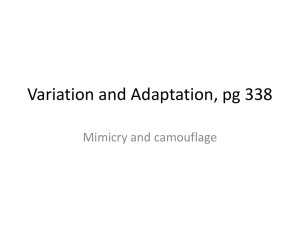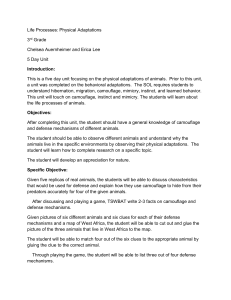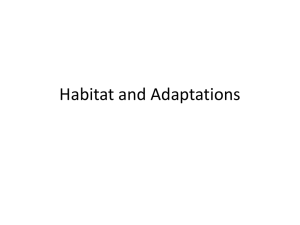Physical Adaptations
advertisement
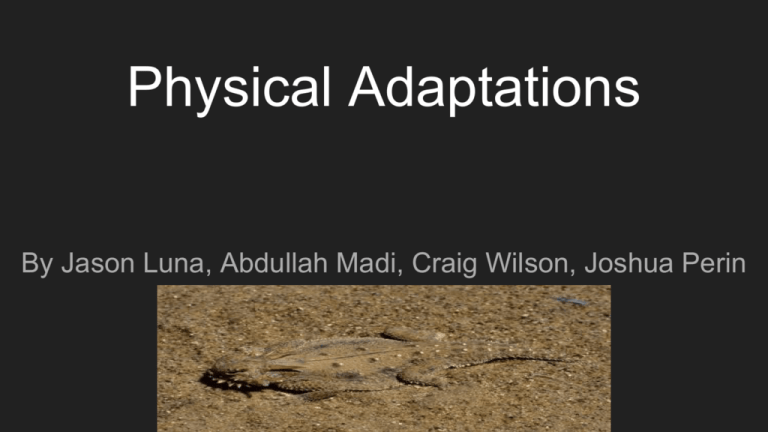
Physical Adaptations By Jason Luna, Abdullah Madi, Craig Wilson, Joshua Perin Camouflage Camouflage - Allows animals to blend in with certain aspects of the environment. Camouflage can be either used for hunting or hiding. Examples: Leopards in Africa blending in with the grass, and waiting for their prey. An octopus blending in with a rock/seaweed to hide from other sea animals. Bird Beak Adaptations DEFINITION :The beak, bill, or rostrum is an external anatomical structure of birds which is used for eating and for grooming, manipulating objects, killing prey, fighting, probing for food, courtship and feeding young. Ex. A hummingbird has a long beak used as a straw to suck nectar. A cardinal has a short beak used like a nut cracker to crack open the nuts and eat them. Warning Adaptation. Warning Adaptation is an adaptation prey take to warn the predator to stay away. Poisonous prey tend to stand out in order to warn predators. When eaten, the poison will harm the animal, and the animal will learn the animal is harmful. Crown-ofThorns Starfish <-- Blue Poison Dart Frog --> Mimicry Adaptation Mimicry is the similarities of one species to another which protects one or both species. The similarities can be in appearance, behavior, sound, scent and even location (with the mimics found in similar places to their model) Mimicry occurs when the mimics evolve to share common perceived characteristics with another group, the models. Citations http://www.biologyreference.com/Ma-Mo/Mimicry-Camouflage-and-WarningColoration.htm http://study.com/academy/lesson/what-is-camouflage-in-animals-definitionexamples-quiz.html www.projectbeak.com/adaptations http://www.biologyreference.com/knowledge/Mimicry.html https://www.google.com/imghp?hl=en&ei=lu08VpjUEMjOjwO8r464Bw&ved=0C AIQqi4oAQ

